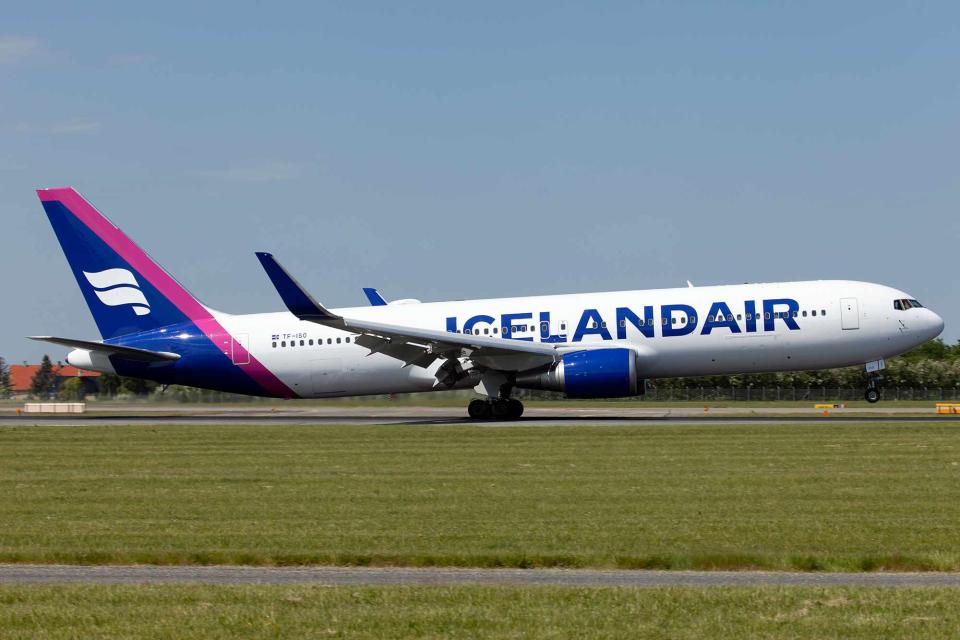Icelandair Exec Shares Strategy Behind Connecting Smaller U.S. Cities to Europe — and What Travelers Should Know
The airline wants to be the preferred connection hub for Americans heading to Europe.

Fabrizio Gandolfo/Getty Images
Connecting in a major international airport is a careful balance between leaving enough time to make the next flight and not wasting hours waiting. In most places, 45 minutes is not nearly enough. But Iceland isn’t most places.
That’s exactly what Tómas Ingason, the chief commercial officer for Icelandair, is counting on. And it’s why he told Travel + Leisure the carrier is working to position itself as the preferred connection hub for Americans heading to Europe.
“It is quite small and convenient,” Ingason told T+L about Iceland’s Keflavík International Airport (KEF). “We are not a huge carrier … It's still about 20 aircraft that are meeting there in a short amount of time, but it's a highly orchestrated thing and we usually get it right.”
In fact, Ingason said Iceland’s geographic location often makes it the simplest (and shortest) one-stop connection to Europe. And it plays into how the airline chooses where they fly in the U.S.
Easy Connections
Icelandair operates a hub-and-spoke model, connecting all flights through Keflavík. From there, the carrier flies to 13 cities in the United States and dozens of others throughout Europe.
As part of its network, Icelandair flies to major hubs including New York and Boston where travelers are spoiled for choice when it comes to connecting to Europe. But where Ingason said the airline differentiates itself is the smaller cities like Portland that have limited direct options — and less transatlantic competition.
“That's kind of our sweet spot,” Ingason said about smaller markets. “The fact that this is not a hub for any of the U.S. airlines but a spoke city, actually makes it even more attractive … as long as there is sufficient demand.”

Ãlavur Frederiksson/Courtesy of IcelandAir
When travelers get to Iceland, they’ll be greeted by a relatively small airport. Last year, only 7.8 million passengers traveled through Keflavík, according to Iceland's Isavia airport authority. In comparison, Hartsfield-Jackson Atlanta International Airport (ATL), often the busiest in the world, saw a whopping 104.6 million travelers in 2023.
With its small size, travelers are pretty much guaranteed to make their connections in just 45 minutes, and Ingason said about 99 percent would still make it in just 30 minutes.
“It has definitely grown quite a bit over the past 10 years so it’s not quite as quaint… as 10, 15 years ago, but it’s still a much smaller hub,” Ingason said. “So it makes for an easy connection.”
Time for Expansion
International travel has exploded in recent years, and airlines have expanded along with demand. Icelandair is no exception.
In 2022, Icelandair launched flights from Raleigh-Durham International Airport (RDU), followed by Detroit Metropolitan Wayne County Airport (DTW) last year. Last month, the airline launched nonstop seasonal service between Pittsburgh International Airport (PIT) and Iceland. At the time, the airline’s president and CEO Bogi Nils Bogason noted travelers from Pittsburgh had already booked flights to 30 different destinations in Europe.
Like some of the other smaller U.S. cities Icelandair flies to, Pittsburgh offers few other direct connections to Europe. Beyond Reykjavik, the only other direct flight is to London, according to the airport.
In the coming years, Ingason said Icelandair is planning to upgrade its fleet with extra long range aircraft, which will allow them to fly to “new untapped markets in North America,” like in southern California or Texas.
Because of Icelandair’s hub-and-spoke model, passengers won’t ever hitch a ride straight to a city like Paris or Amsterdam, but Ingason said plenty of travelers are taking advantage of that stop in Reykjavik. Of course, the airline’s free stopover program doesn’t hurt.
Ingason said about half of the airline’s passengers are transatlantic travelers on their way to other parts of Europe, and about 20 to 25 percent of them stop in Iceland for a few days on the way.
“Maybe the big secret is that Iceland is also an aspirational destination,” Ingason said.
Where Travelers Can Go
Whether you spend a few days in Iceland first or simply grab an airport hot dog — there’s a famous Bæjarins Beztu outpost at Keflavík — and move on, Ingason said Icelandair has you covered. The airline flies to dozens of cities across Europe, including some of the largest and most popular like Paris, Rome, and Barcelona; as well as some of the smallest, like the remote Faroe Islands, a craggy and breathtaking archipelago halfway between Iceland and Norway that only received about 60,000 total tourists in 2023, according to data provided to T+L by the local airport.
Just like in the U.S., Icelandair is expanding in Europe.
The airline just launched that Faroe Islands flight in May and also launched flights to Innsbruck in Austria this year. Last year, the carrier added flights to Prague.
“As we expand in North America, we also need to expand the network, whether it’s frequency or new destinations in Europe so we have a balanced network,” Ingason said.
For more Travel & Leisure news, make sure to sign up for our newsletter!
Read the original article on Travel & Leisure.


